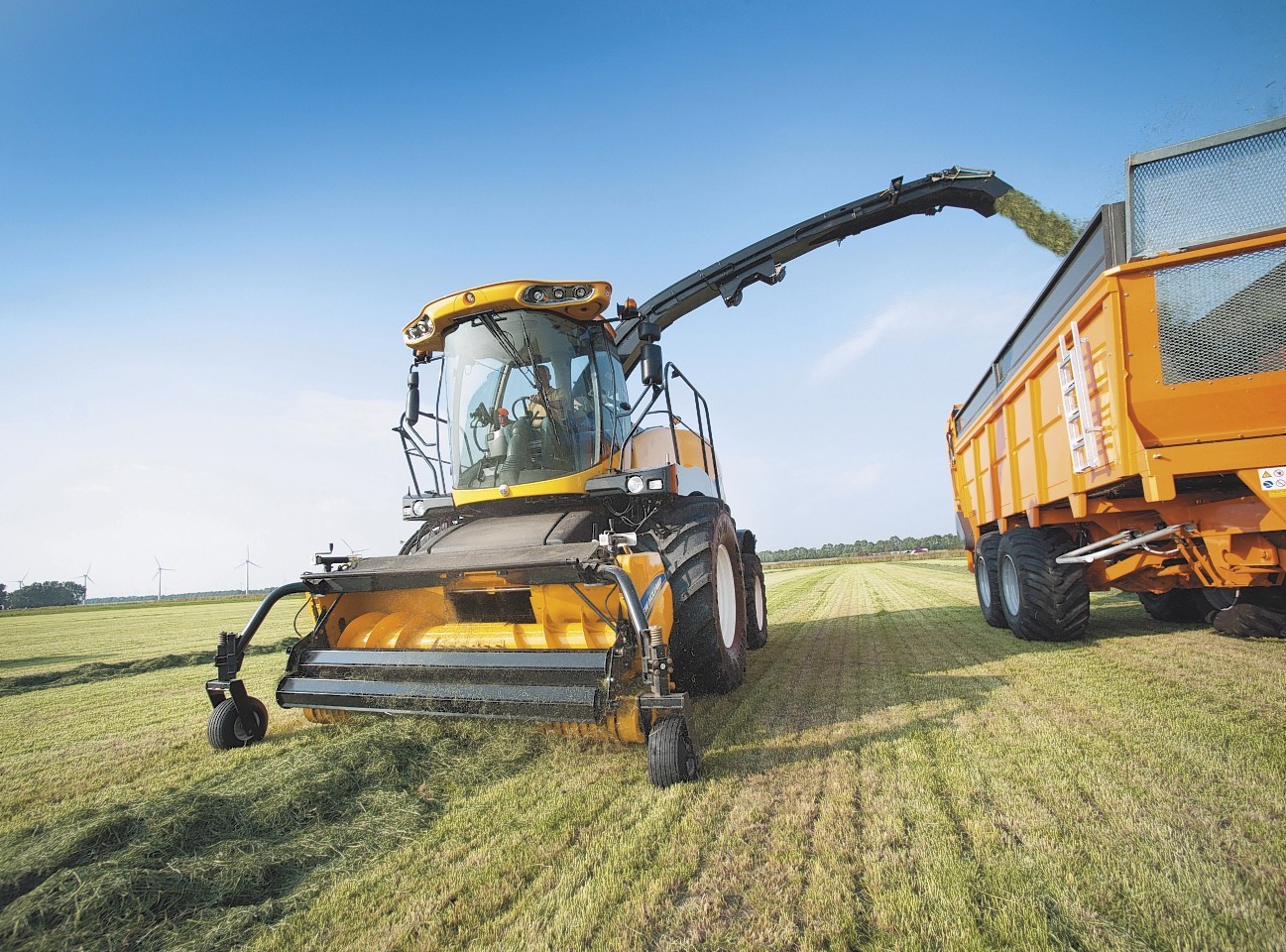Self-propelled forage harvesters are now the weapon of choice for farmers and contractors with large areas of crop to cut and ensile in a short time.
They may be expensive compared to their trailed counterparts but they have that indispensable ingredient – loads of grunt. It takes real horsepower to chop a heavy crop of grass or whole crop cereals and that is especially so for the increasing number of operators harvesting hybrid rye, grass or maize for biogas production. Short chop length is vital for biogas production with long material giving the “steel cows” a serious dose of indigestion.
To cope with these requirements New Holland has completely renewed its range of forage harvesters with the launch of the new FR range. The five models in the range deliver between 450-824hp and are claimed by the company to offer industry-leading chop quality and consistency.
Length of cut (LOC) can be controlled by a new ActiveLOC feature which changes automatically on the move according to real-time crop moisture reading.
As moisture content increases, length of cut will increase automatically depending on pre-set configuration input by the operator. The result should be improved machine output but more importantly it should maintain optimum clamp density.
Another neat feature, especially likely to be appreciated by those with memories of skinning their knuckles while trying to break into a knot of solidly packed grass, is improved access to the area between the cutterhead and the blower. In the hopefully unlikely event of a blockage the concave door can be opened from the comfort of the cab and the blockage cleared without leaving the seat. Happy days.
To further aid the operator there is also an Intellifill system which guides the spout and makes trailer filling an automatically controlled system. This might seem like a luxury but with large capacity trailers only taking a few minutes to fill it is almost a necessity.
A specialised 3D camera mounted under the spout guides the crop flow into the trailer, ensuring a uniform fill.
The spout-mounted sensor creates a distance image of the trailer and its surroundings based on near infra-red technology, which means crops can be accurately discharged up to a distance of 20 metres.
What is more, the system needs no manual calibration, and recognises different types of trailer automatically. The system apparently works equally satisfactorily at night.
Accurate yield mapping is also available and is deemed to improve customer service. If a contractor can hand over a yield map within minutes of finishing a field his customer is bound to be impressed, or so the argument runs.
“The latest generation of FRs represents the pinnacle of forage harvesting technology, and is the culmination of over 50 years of pioneering forager firsts,” said Hedley Cooper, head of harvester product management with New Holland.
“In 1961 we revolutionised the world of forage harvesting with the Model SP818.”
Today’s machines are manufactured in the Zedelgem plant in Belgium. The Cursor 9 and Cursor 13 engines fitted to the 450 hp FR450 and 520hp FR500 respectively, use a combination of Ad Blue additive and selective catalytic reduction technology to make sure they meet the necessary Tier 4A compliance.
Ad Blue, something of a necessary evil nowadays, is made a little more acceptable by fitting a 150-litre tank which should outlast two fills of diesel.
Fuel consumption has been optimised courtesy of Power Cruise technology which encourages fuel savings in the field, and on the road where engine speeds, as low as 1,400rpm should lead to an additional 20% reduction in fuel consumption.
The FR machines have all-new chopper bodies designed to enhance chop quality in terms of uniformity and throughput.
Moreover, changing from the grass to the maize setting has been simplified to reduce downtime during tight foraging windows.
The paddle type blower has increased the mass of smooth flowing air by a full 40% to transport higher volumes of crop more efficiently and to reduce the risk of crop accumulation in the chopper area. The increased air flow can also be of real benefit when crops are light.
The styling is new too with a wider operator platform and sculpted hand rails for safe entry and exit late at night and after long working days. The side panels open wide as a single unit on self-supporting gas struts for easy servicing access.
There is a new grass pick-up header available in two working widths. The three-metre model is ideal where transport width is important but the super-wide 3.8-metre version is designed to handle the widest grass swaths. The roller wind guard has been designed to ensure that all-important smooth crop flow from swath to forager and can be adjusted from the cab to maintain constant flow in swaths of changing densities.
Pick-up speed has been significantly increased thanks to the addition of a supplementary tine bar, bringing the total to five, which enables higher ground speeds.
All headers are claimed to be quick and easy to attach and lateral and vertical header height correction are managed from the cab to ensure the header follows the contours of uneven ground without bulldozing or lifting.
The heart of the machine however remains the chopping drum and these feature a dual drive function enabling ‘straight through’ crop-flow by disengaging the threshing mechanism making it perfect for miscanthus biomass harvesting. There is also a coppice header with integrated saw blades which can slice through stems of up to 15cm (six inches) and produce uniform woodchips.
All things told this new range of forage harvesters from New Holland looks set to be big beasts in the competitive and tough world of crop harvesting.
